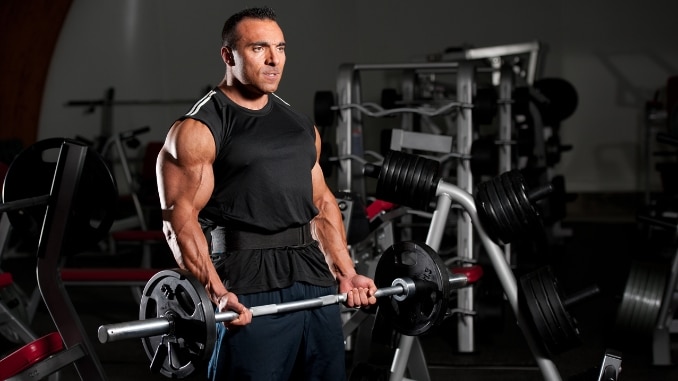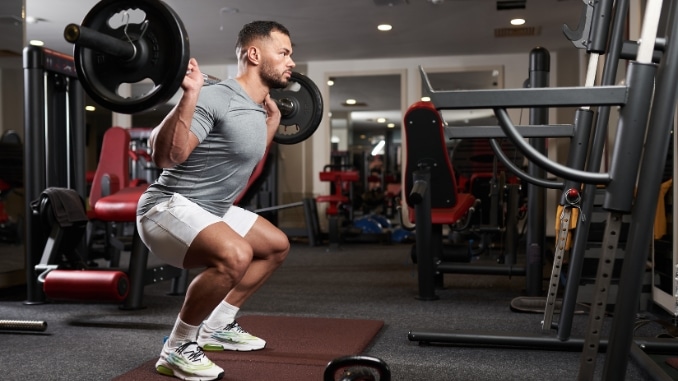Let’s face it: injuries can be frustrating, particularly when determining how to exercise safely during recovery. Whether it’s your shoulder, knee, back, or foot, being hurt can throw a major wrench into your workout routine.
But here’s the truth: you don’t have to stop training altogether. You can still exercise with an injury. In fact, with a few smart tweaks, you can stay active, build strength, and accelerate the recovery process—without aggravating the injured area.
Mike Robertson, MS, CSCS, USAW—renowned performance coach and rehab specialist—shares four powerful training adjustments to help you stay fit, even while your body is healing.
Let’s dive in.
Tweak 1: Switch to Sumo Deadlifts for Back Pain

If you’ve experienced back pain, the problem might be your deadlift setup. The conventional style places more shear force on your spine due to a forward-leaning torso.
Sumo deadlifts, on the other hand, offer a more upright posture, reducing lower back stress.
Think of it this way: instead of pushing your hips back, open your groin and drive your knees out. This shifts the load to your hips and groin—sparing your spine.
Keyword Win: Sumo deadlifts = less spinal compression, more core + glute strength. A great idea for staying active with upper body injuries or while recovering from low-back tweaks.
Tweak 2: Box Squats for Knee Pain Relief

For example, if you’re struggling with knee pain during squats? Poor ankle mobility could be the culprit, especially during front squats.
Instead of forcing your joints into compromised positions, try box squats. Sit back as if lowering onto a chair, maintaining a vertical shin angle to reduce knee stress.
Bonus: this tweak lights up your glutes and hamstrings—a common area of weakness in most people’s workout routines.
Meanwhile, spend your warm-up time on ankle mobility drills to fix the root cause.
Tweak 3: Push-Ups Over Bench Press for Shoulder Pain

If you’ve got a nagging shoulder injury [1], the bench press could be doing more harm than good.
Instead, swap in push-ups. Push-ups activate the serratus anterior, enhance scapular stability, and promote controlled movement of the rotator cuff in a safer, closed-chain environment.
Push-ups also create a closed-chain environment that challenges your core while sparing the injured area. It’s one of the most underrated tools in physical therapy and rehabilitation for shoulder issues.
Tweak 4: Go Unilateral to Fix Imbalances

Here’s a common instance: one shoulder has full mobility, while the other feels stiff and limited.
For shoulder injuries and general imbalance correction, dumbbell training trumps barbells. Try single-arm pressing or dumbbell rows. You’ll reduce strain, correct asymmetries, and improve core engagement.
This approach isn’t just safe—it’s smarter. You’ll come back stronger, more balanced, and less likely to re-injure yourself.
Should You Exercise While Injured?
In a word: Yes, you can still exercise if you have an injury but with conditions.
Your doctor or physical therapist should always give you the green light first. Once that’s done, exercising can actually enhance blood flow, maintain muscle balance [2], and prevent mental burnout.
The key is to train smart—not harder. You’re not pushing for PRs; you’re keeping your body active, your fitness intact, and your recovery on track.
Do’s and Don’ts of Working Out After Injury

DO:
- Get cleared by a doctor or physical therapist first.
- Focus on low-impact movements like walking, swimming, or cycling.
- Train non-injured areas (think: cross training [3]).
- Modify your routine—use lighter weights or reduced range of motion.
- Monitor for discomfort—slight tension is fine, but pain is not.
- Add mobility work, stretching, and rehab exercises into your daily routine.
DON’T:
- Push through sharp pain (you’re not proving anything).
- Train the injured area aggressively before it’s ready.
- Skip your recovery process—rest is part of the plan.
- Stick to your usual training volume without scaling.
- Compare your current strength to your peak. You’re building back smart.
Final Thoughts: Train Smart, Heal Strong
Injuries are part of the fitness journey—not the end of it.
Whether you’ve hurt your knee, shoulder, foot, or are dealing with muscle soreness that just won’t quit, the best idea is to adapt. Here are some tips: your goal isn’t to crush every workout—it’s to support your overall health while letting your body recover.
So whether it’s subbing in push-ups for the bench, or going one leg at a time on squats, the tweaks you make today can lead to long-term gains tomorrow.
Keep moving. Stay focused. And most importantly—listen to your body.
You can follow this program anywhere you want to on your own, whether at home or in the office. It’s a personal treatment plan and there is no need for assistance. Check out this Shoulder Pain Solved now!
Frequently Asked Questions
Can I still exercise if I have an injury?
Yes, you can still exercise but it depends on the injury type and severity. Always consult your doctor or a physical therapist before resuming any routine. With guidance, many people can modify their workout routine to safely stay active without stressing the injured area.
What are the best workouts for staying fit while recovering from an injury?
Focus on low-impact options like swimming, walking, or cross-training with bodyweight movements. These can help you stay fit, support your overall health, and promote blood flow to speed up the recovery process.
How do I know when it’s safe to start exercising the injured area again?
When you can move the injured joint or muscle without discomfort, and your physical therapist or rehab specialist clears you, you can start exercising gently. Begin with light movement, monitor for pain, and slowly build back into full training.


